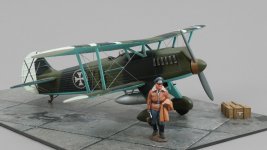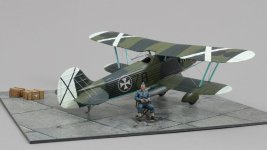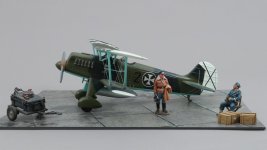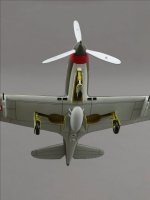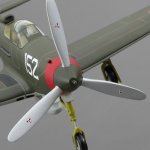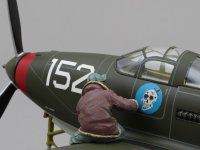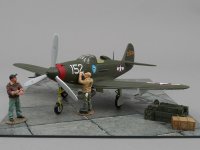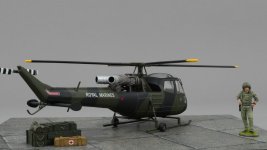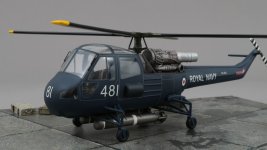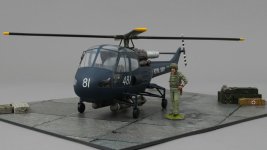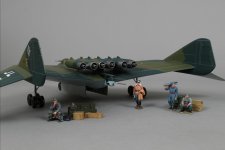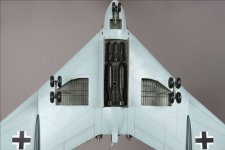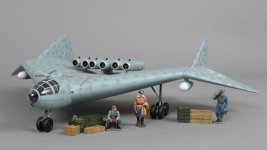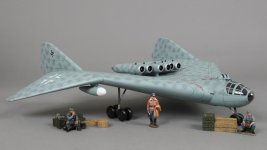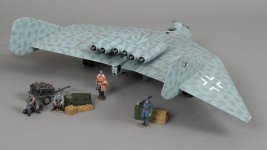WOW676 Bell P-39 Airacobra - Bud Anderson
Designed by the Bell Aircraft Corporation, the unusual, mid-engined P-39 Airacobra holds the record for the highest number of enemy aircraft victories attributed to any US-built fighter in history, with the majority of these victories being by Russian pilots in WW2.
The XP-39 made its maiden flight on 6 April 1938. An unusual and unconventional design. The pilot had to be placed higher in the fuselage than in most contemporary fighters, which, in turn gave the pilot a good field of view. Access to the cockpit was by way of sideways opening "car doors", one on either side. Both had wind-down windows. As only the right-hand door had a handle both inside and outside this was used as the normal means of access and egress. The left-hand door could be opened only from the outside and was for emergency use, although both doors could be jettisoned. In operational use, as the roof was fixed, the cockpit design made escape difficult in an emergency
Because of the unconventional layout, there was no space in the fuselage to place a fuel tank. Although drop tanks were implemented to extend its range, the standard fuel load was carried in the wings, with limitations on range.
The Airacobra saw combat throughout the world, particularly in the Southwest Pacific, Mediterranean and Soviet theatres. Because its engine was equipped with only a single-stage, single-speed supercharger, the P-39 performed poorly above 17,000 feet (5,200 m) altitude, due to the lack of a supercharger. In both western Europe and the Pacific, the Airacobra found itself outclassed as a high altitude interceptor and the type was gradually relegated to other duties. It often was used at lower altitudes for such missions as ground strafing.
Nearly half of all P-39s were sent to the Soviet Union: 4,719, accounting for more than one-third of all US and UK-supplied fighter aircraft. It was ideally suited to air combat in the USSR, because most air combat took place at medium and lower altitudes and this is where this bird found its aerial combat forte.
This 1/30 scale Bell P-39 Airacobra 'Old Crow' Thomas Gunn are releasing was flown by Clarence Emil "Bud" Anderson, a triple ace in WW2, becoming the highest scoring flying ace in his P-51 Mustang squadron.
The unit insignia, a skull on a blue background, was painted on the cockpit door.
The aircraft’s sides of the nose had a white tactical number 152 painted on them, with the pilot’s choice of name, “Old Crow” (a Kentucky bourbon brand) in small letters below it.
Bud Anderson began flying Bell P-39 Airacobras with the 329th Fighter Squadron at Hamilton Field and then at the Oakland Municipal Airport, from September 1942 to March 1943. He was later assigned to the 363rd Fighter Squadron of the 357th Fighter Group at Tonopah, Nevada, in March 1943. Moving to various bases in California from May to October 1943, then at Casper, Wyoming, from October to November 1943, and finally deploying to England in November 1943.
Bud Anderson flew a F105 Thunderchief in the Vietnam war and retired as a Colonel in March 1972. He was decorated 25 times for his service to the United States, during which he flew over 100 types of aircraft and logged over 7,000 flying hours.
Clarence Emil "Bud" Anderson died at the age of 102 in 2024.
Our 1/30 scale model is limited to 3 worldwide and is priced at $699 plus postage.
All the TG/K&C figures/accessories displayed in this newsletter are shown for scale comparison purposes only and are not included. |




